Recent Articles
Popular Makes
Body Types
10 Best Electric Vehicles With Self-Driving Features for 2021
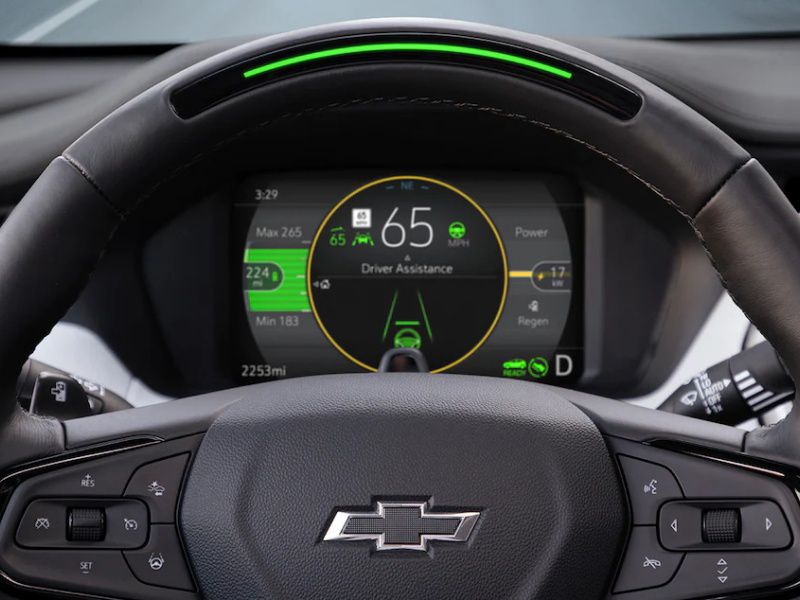
2022 Chevrolet Bolt EUV ・ Photo by Chevrolet
Electric vehicles that drive themselves — these two technologies often go hand-in-hand as the next frontier of automobiles. What’s more, America’s dominant EV-maker is famous for its advanced driver’s aids. We mean Tesla’s Autopilot and Full Self Driving systems.
To be clear, Teslas aren’t self-driving cars. The driver still needs to be in control and attentive, even as the car works the accelerator, brakes, and steering in certain situations. But Teslas and many other excellent electric vehicles offer excellent self-driving features that can make driving safer and more convenient. These semi-autonomous systems include adaptive cruise control, which maintains a minimum distance from the car in front of you as it slows down and speeds back up; automatic emergency braking, which can autonomously slam the brakes to avoid or mitigate a collision; blind-spot monitoring, which looks over your shoulder to help prevent you from changing lanes into another vehicle; a lane-departure warning that lets you know if you stray over the line; and lane-keeping assistance, which automatically steers the car back into its lane if you stray over the edge. Here are the 10 best electric vehicles with self-driving features, sorted approximately by price.
1. 2022 Nissan Leaf
The Nissan Leaf is an affordable all-electric car that just got even cheaper for the 2022 model year. It now starts at just $27,400, which is less than $20,000 when you factor in a $7,500 federal tax credit. And it’s available with adaptive cruise control and Nissan’s ProPilot Assist suite for not much more money than that.
The Leaf isn’t an ultra-cool electric car. It’s not super-fast, and it doesn’t have a super-long range: 150 miles on the base model, though up to 226 miles with an optional larger battery. It looks like an ordinary small hatchback inside and out. But if you’re just looking for an affordable, economical transportation appliance, the Leaf is an incredible value — comfortable, functional, and available with many self-driving features.
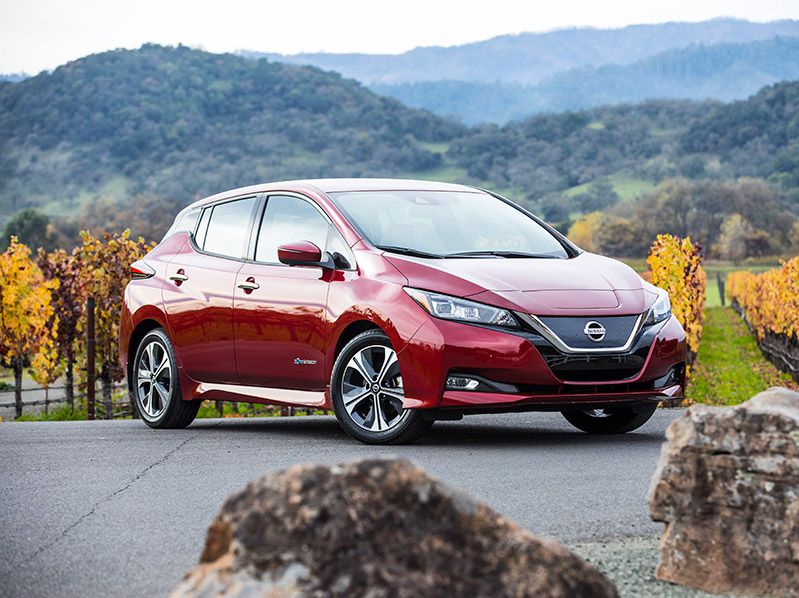
Photo by Nissan
2. 2021 Hyundai Ioniq EV
The Hyundai Ioniq is a compact hatchback that’s available in hybrid, plug-in hybrid, and fully electric versions. It costs more than the Leaf — with a base price of $33,245 before the $7,500 federal tax credit — but it also feels a little more expensive. It’s more agile, has a slicker infotainment system, and has adaptive cruise control as standard equipment. Its range also trumps the base Leaf’s at 170 miles per charge. The Leaf does have a roomier interior than the lower, sleeker Ioniq, though.
In addition to adaptive cruise control, every Ioniq EV includes lane-keeping assistance and automatic emergency braking, while you need the top Limited trim level ($38,815) for blind-spot monitoring.
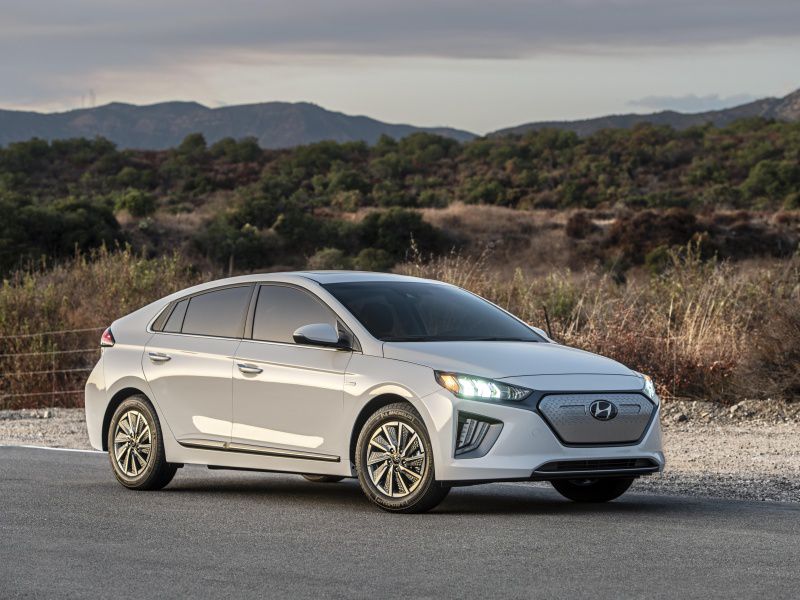
Photo by Hyundai
3. 2021 Volkswagen ID.4
The Volkswagen ID.4 is an all-electric compact crossover with graceful styling, peppy acceleration, and more cargo space than most relatively affordable electric vehicles. It’s also the most affordable EV to include all-wheel drive, which is a newly available option that also boosts the vehicle’s power.
The ID.4 comes standard with “IQ.Drive,” a suite of self-driving features that includes adaptive cruise control, lane-keeping assistance, automatic emergency braking, and blind-spot monitoring. Prices start at $39,995 before a $7,500 federal tax credit, and range is typically around 250 miles per charge. However, we found the SUV’s dashboard controls to be incredibly obtuse, with lots of touch-sensitive buttons that need lots of attention and repeated taps to operate — without even the benefit of an ultramodern interior design.
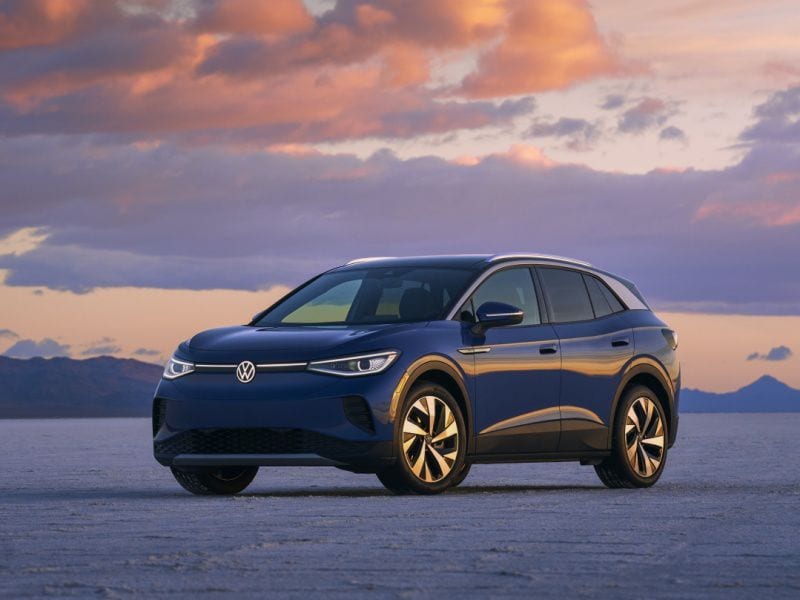
Photo by Volkswagen
4. 2022 Chevrolet Bolt EUV
The Chevrolet Bolt EUV is a new SUV-lite version of the Bolt all-electric tall hatchback, which is actually similar in space and styling. And neither the Bolt nor the Bolt EUV (electric utility vehicle) is available with all-wheel drive.
But the Bolt EUV has an important self-driving feature: Super Cruise. This is General Motors’ hands-free system, which is one of the few semiautonomous features that actually encourages you to take your hands off the steering wheel. It operates only on pre-mapped roads and shuts itself off when conditions become challenging, but if you’re looking for the self-driving experience, put your hands in your lap and watch your Chevy turn the steering wheel for you. Range is 247 miles per charge and prices start at $33,000, but GM’s electric vehicles are no longer eligible for federal tax incentives because the company has already sold enough EVs to use up its allotment. Another heads up: As we write, GM is recalling all Bolt models to repair their batteries over fire hazards, which is affecting availability in the short term.
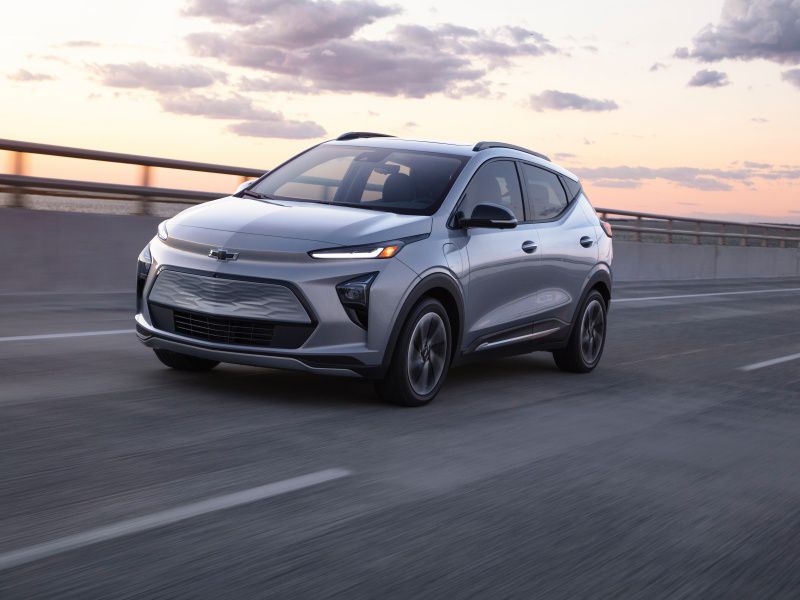
Photo by Chevrolet
5. 2021 Ford Mustang Mach-E
The Ford Mustang Mach-E takes the style of the company’s iconic performance coupe, turns it into a low mid-size crossover, and imbues it with all-electric performance. The result is an electric car that looks like no other, yet that’s also big enough to fit four adults and their cargo, even if it’s not much of a true SUV.
The Mustang Mach-E also has more character than some of its rivals. It’s not only quick and agile, but it also feels more like an old-school performance car than a smartphone on wheels. Ford didn’t dial out every sensation from driving the Mach-E; it’s not perfectly smooth like some EV buyers would pick, but it’s closer to driving a regular Mustang than you might expect. Ford even lets you activate a synthetic engine rumble. And when you’re ready to let the car take over some driving tasks, adaptive cruise control, automatic emergency braking, lane-keeping assistance, and blind-spot monitoring are standard. And Ford’s Super Cruise equivalent, called BlueCruise, is coming soon — including to Mach-E vehicles that are already on the road. The Mach-E is priced from $42,895 before the $7,500 federal tax credit.
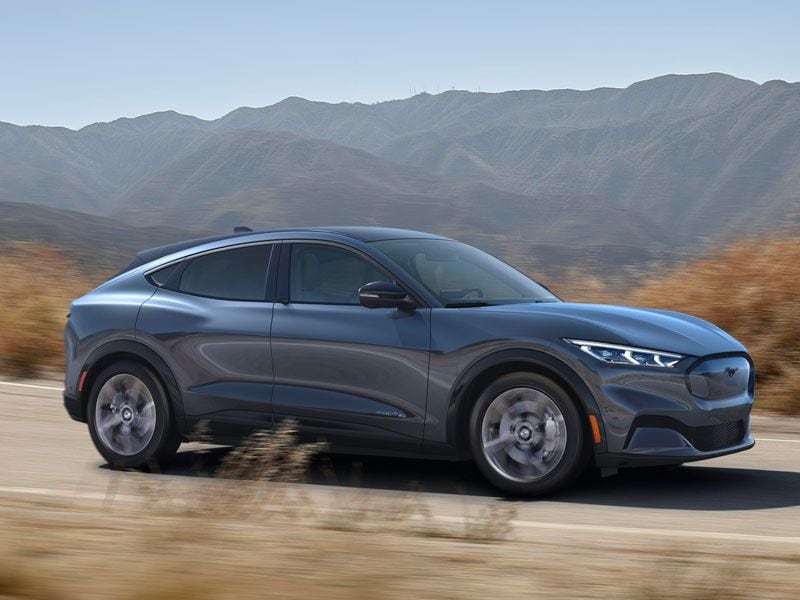
Photo by Ford
6. 2022 Polestar 2
Odds are, you’ve never heard of Polestar. It’s Volvo’s new spinoff lineup of electrified vehicles, which stands at one six-figure coupe and this Polestar 2 compact luxury sedan. The market’s closest rival to a Tesla Model 3, the Polestar is chunky instead of sleek, and it doesn’t go as fast or as far as a Tesla; its ranges are 249 to 265 miles, depending on the powertrain.
Still, the Polestar 2 delivers a more conventionally luxurious interior along with a relatively affordable price. Its new front-wheel-drive “single-motor” version trades exuberant acceleration for better value for the money; it starts at $45,900 before a $7,500 federal tax credit. You can also pay $4,000 extra for all-wheel drive and quicker acceleration, also at a lower starting price than last year’s model. Polestar also borrows from Volvo’s arsenal of self-driving features, which work smoothly in this electric car.
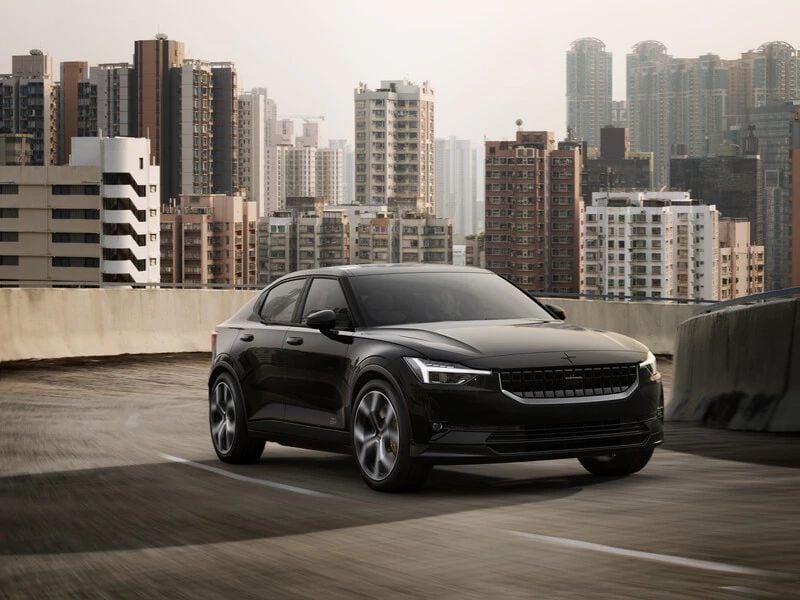
Photo by Polestar
7. 2021 Tesla Model 3
While Tesla benefits in part from the best name recognition, it’s not all hype. Tesla’s technologies make self-driving cars feel like the present instead of the future, including in the brand’s cheapest vehicle: the 2021 Tesla Model 3 compact sedan. The systems operate with uncommon smoothness, and Tesla’s huge 15-inch infotainment screen displays a slick computer rendering of what the car’s sensors are “seeing” and responding to.
In addition to all these self-driving features, the Model 3 is a great car to operate. It’s quick and agile, and effortlessly slick. It’s also the most economical vehicle on the market, with an EPA-estimated 142 miles per gallon equivalent (MPGe) and ranges of 263 to 353 miles per charge. One difference from Super Cruise and BlueCruise: Tesla’s Autopilot and Full Self Driving systems do not allow you to take your hands off the wheel, even if the car appears smooth enough to handle things by itself. The Model 3 currently starts at $39,990, but like GM, Tesla is no longer eligible for federal tax credits.
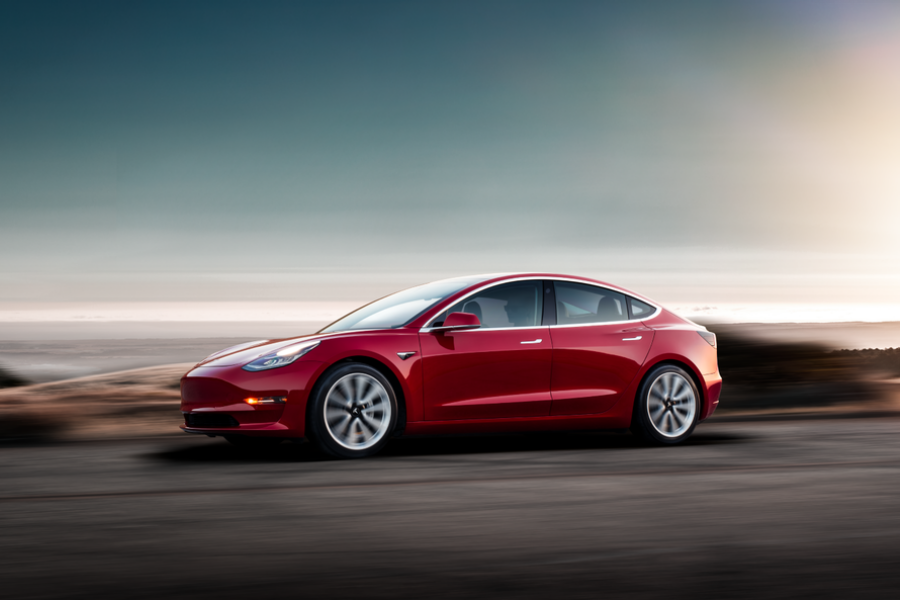
Photo by Tesla
8. 2021 Tesla Model Y
Do you love the Tesla Model 3 but want a little more room? It’s time to consider the Model Y, an SUV version of the Model 3. It costs about $4,000 more than the comparable Model 3, but because Tesla doesn’t offer a base model of the Y as of this writing, that makes for a current starting price of $53,990.
You get a similar exterior design to the Model 3, along with a similar driving experience. You get nearly the same acceleration, range, and efficiency. You get the same dashboard, which moves all displays and controls to the 15-inch touchscreen except for a couple of buttons on the steering wheel. And you get the same Autopilot and Full Self Driving systems. The Model Y isn’t quite as luxuriously finished as most SUVs at this price point, but it’s still clearly a high-end product. And like other Tesla models, it can use the company’s proprietary Supercharger network of public fast-charging stations.
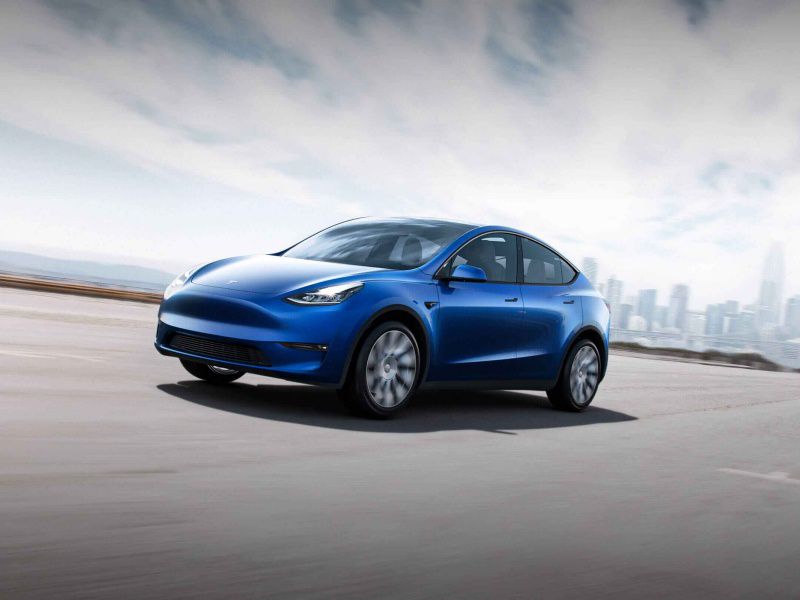
Photo by Tesla
9. 2022 Audi E-Tron
When a relaxed ride and elegant interior mean more than the maximum possible range, the Audi e-tron electric SUV delivers. This isn’t the EV for long road trips, handling an EPA-estimated 222 miles per charge. But that’s plenty of range for extra-comfortable emissions-free commuting, and its heavily customizable self-driving features work smoothly.
While the e-tron historically has avoided neck-snapping acceleration, a new performance model is out this year with 496 horsepower. And you can pair this powertrain with the relatively new Sportback model — pictured on this page — which trades some of the standard e-tron’s generous cargo space for sportier styling. The e-tron is priced from $65,900 and qualifies for the $7,500 federal tax credit.
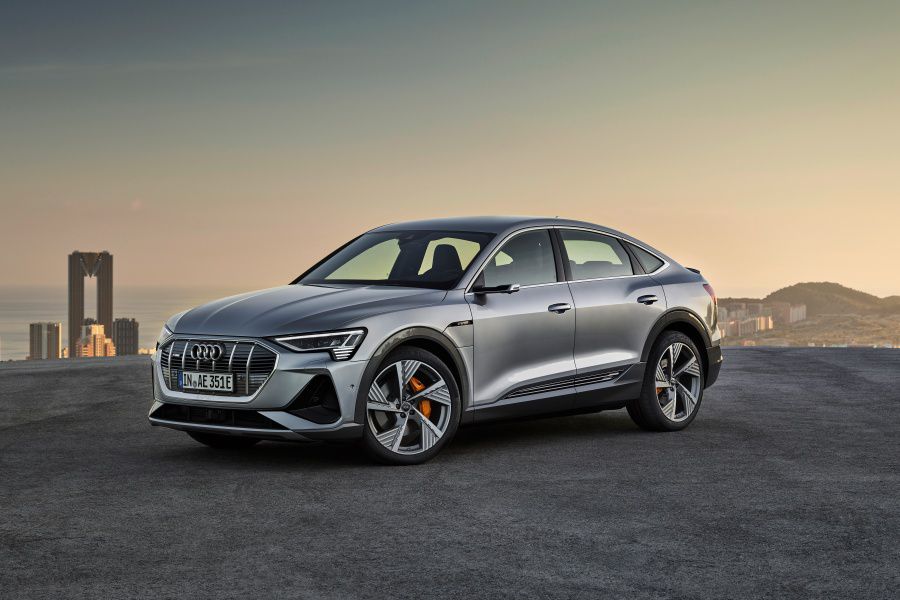
Photo by Audi
10. 2021 Tesla Model S
The original Tesla sedan, the Model S created the idea of an electric luxury performance car, and it remains one of the best — with some caveats. A big one is the new steering wheel, or lack thereof; Tesla now equips its flagship Model S sedan and Model X crossover only with a “yoke” that’s clumsy to use when you need to make more than slight steering adjustments.
Fortunately, Tesla’s self-driving features are on hand to help out, though mostly for those minor steering adjustments anyway. Even if the outer shell of the Model S hasn’t changed in nearly a decade, Tesla never stops updating the vehicle’s technology. With the Model 3 taking over as the brand’s more affordable model, the Model S is currently available only in extra-fast versions that cost $89,990 and up (with no federal tax credit available). If you don’t mind the yoke, you’ll get an incredible performance machine that’s also a spacious liftback sedan.
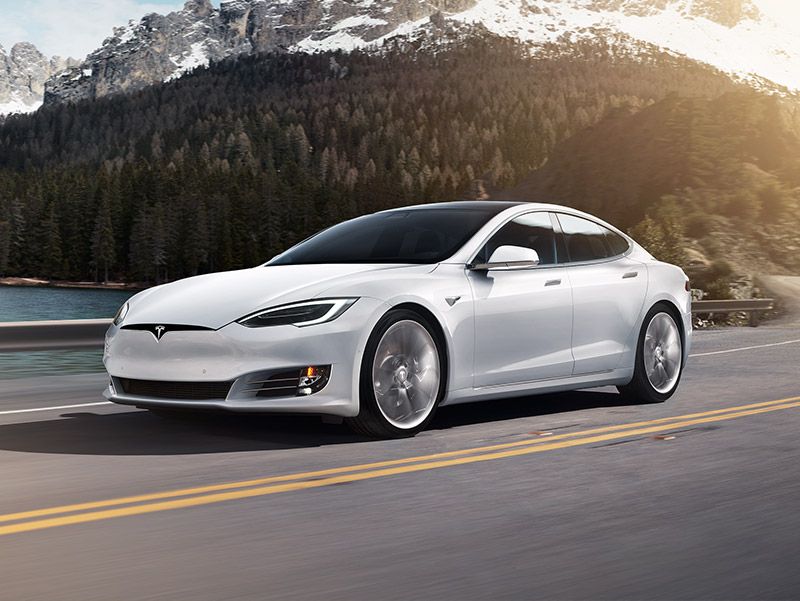
Photo by Tesla